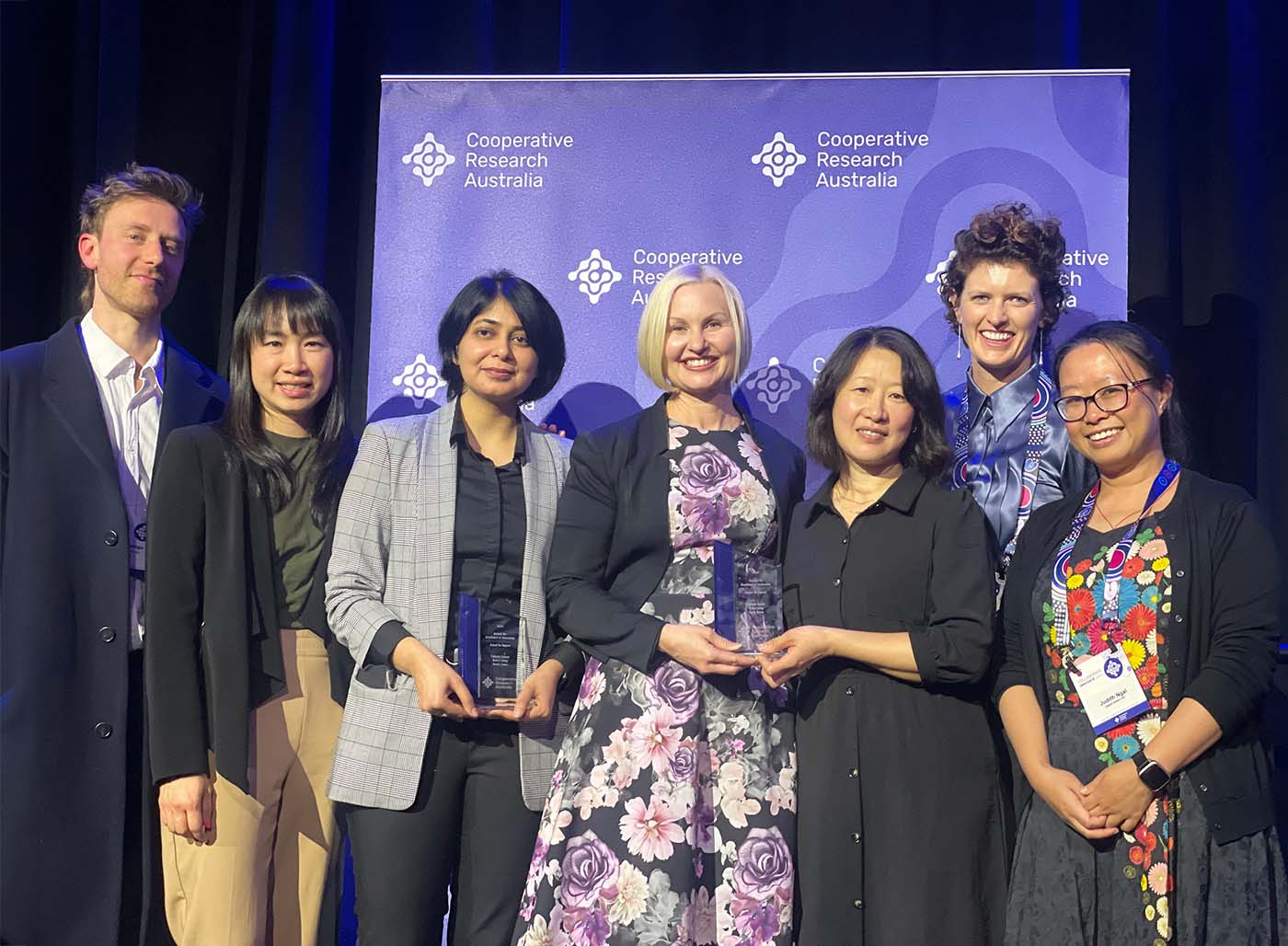Australia's first electronic screening and risk prediction tool for deterioration in aged care residents has won another national prize for its positive impact on health and safety.
The digital health tool - developed by RMIT University, Telstra Health and Digital Health CRC - is now winner of Research Australia's Digital & Data Health Innovation Award for 2024.
Detecting health deterioration in frail residents is notoriously difficult: early signs are often subtle and involve a complex mix of physical, mental, and functional factors that conventional hospital tools can overlook.
Workforce shortages further challenge aged care facilities' ability to consistently monitor for these signs, resulting in nearly 40% of aged care residents being transferred to hospitals each year. Research suggests that up to 40% of these transfers could be prevented through early detection and intervention.
In response, the team from RMIT, Telstra Health, and the DHCRC developed a ground-breaking tool that uses natural language processing and machine learning to automatically analyse data from electronic records.
This tool continuously monitors residents' data for 36 evidence-based markers of deterioration, providing near-real-time prediction of risks like falls, depression and mortality.
The results are displayed on a dashboard, allowing staff to monitor both individual residents and overall trends, supporting timely, proactive decisions to get residents the care and support they need.
The team receiving the Digital & Data Health Innovation award from Research Australia.
RMIT's project lead and data scientist, Dr Tabinda Sarwar, said the diversity of aged care facilities made adapting AI-powered tools complex, with each provider demanding tailored solutions to support their unique workflows.
"This project wasn't a one-size-fits-all approach. We had to consider the specific needs of each facility and that is what makes this achievement so significant," Sarwar said.
The team's commitment to real-world impact is evident in the collaboration with gerontologists and aged care staff.
By analysing historical data and employing innovative predictive analytics techniques, the tool has the potential to benefit over 60,000 elderly residents.
The tool has undergone rigorous clinical validation and usability studies by nursing staff, ensuring its effectiveness and usability in real-world settings.
"We couldn't have achieved this without working closely with care staff on the ground," Sarwar said.
"Their expertise and assistance have been invaluable in ensuring our solutions are not just effective, but also practical and relevant to the daily challenges faced in aged care."
Telstra Health's Chief Health Officer Dr Monica Trujillo described the tool as a milestone and crucial step forward in creating safer, higher-quality aged care.
"By harnessing natural language processing and machine learning, we are not only improving resident outcomes but also supporting care providers with actionable insights to make timely, life-saving decisions," Trujillo said.
DHCRC CEO Annette Schmiede said the Australian-first innovation demonstrated how routinely collected data could be used to ensure elderly people received the care they deserved while easing growing demands on healthcare providers.
"Caring for Australia's rapidly ageing population, even in one of the best healthcare systems in the world, has its challenges," Schmiede said.
"Innovative digital health tools, like the one developed by RMIT and Telstra Health, can ensure that aged care residents receive timely, personalised care and reduce the incidence of stressful and costly emergency interventions"
"Being recognised by Cooperative Research Australia at their Excellence in Innovation Awards earlier this year, and now Research Australia at the Health and Medical Research Awards, is a true testament to the hard work and dedication of all those involved to address one of the most significant challenges in Australia."

The team winning Cooperative Research Australia's Excellence in Innovation award earlier this year. RMIT project lead Dr Tabinda Sarwar third from left, holding a trophy.
On receiving the award, Dean of RMIT's School of Computing Technologies Professor Karin Verspoor said the collaboration highlighted the opportunities to make a real difference by harnessing technology to help make sense of rich unstructured health data.
"It is a very exciting time to be working at the intersection of AI and health," she said.






